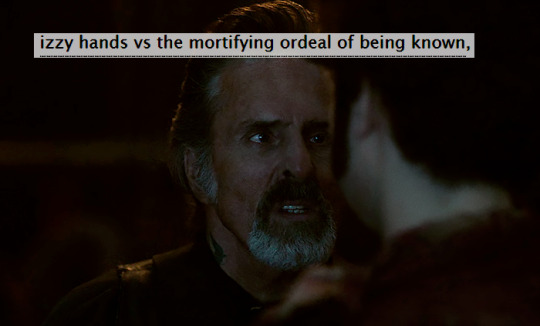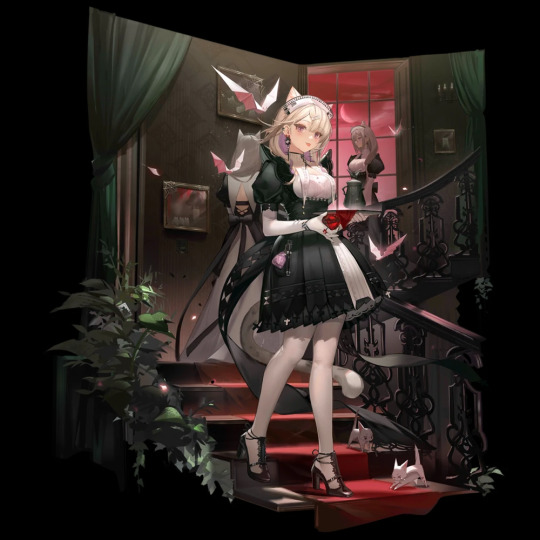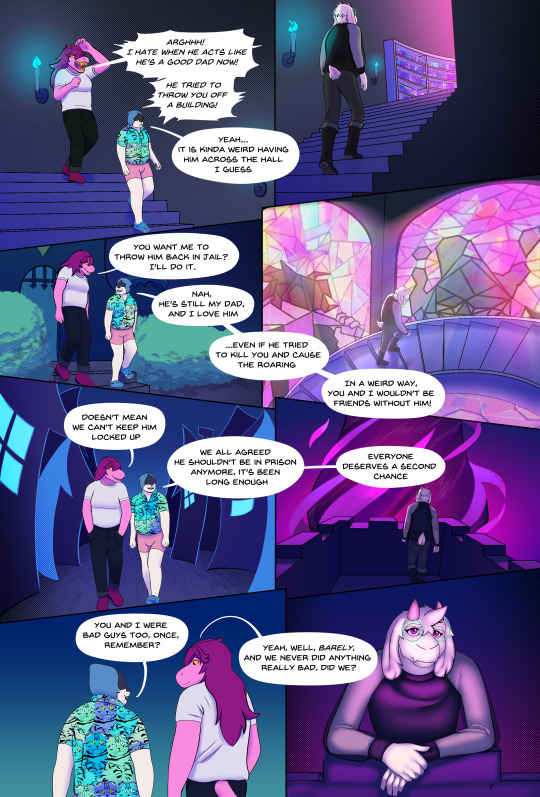#paratext
Text



some of my favourite ofmd-specific ao3 tags
#i haven't been collecting these so it took forever to find just the ones i remembered off the top of my head lol#getting increasingly efficient at finding the exact screenshot i want tho i'm sure that's normal#izzy hands#steddyhands#sprigghands#ofmd fanfiction#ao3#also i'm really bad at bookmarking things apparently#...#paratext
220 notes
·
View notes
Text
Fandom, Paratext, Authorship
Though we have long reserved the title of “author” for a single nominated figure associated with the film, television show, book, videogame, or other media product, authorship is multiple, and when paratexts can change meanings, at times profoundly, then we must acknowledge how trailer editors, poster designers, book cover artists, fan producers, DVD producers, and so forth are all authors in their own right. And to acknowledge them fairly as authors is to acknowledge that authorship is a fractured process, spread out over time, not simply preceding the work or product in question. Anything authored can be re-authored, and paratexts will be the primary means of re-authoring.
From this observation about authorship follow a series of other observations about textual power. Authorship, after all, is about power, about determining who has the ability and the right to speak for the text, and who gets to speak with the text. Authorship is authority, a position of power over a text, meaning, and culture. Hence, paratextual re-authoring assures that this power to speak is shared among many, and it disallows any text the ability to speak in one way continuously, unabated. Hopefully, we might note the degree to which this situation denies any text too much power, for with smart and careful paratextual engagement, we can always re-author texts, negating past meanings and uses. Practically, though, this situation should invite us to realize how content producers have regularly aimed to control the paratextual field precisely to shut down alternate readings and to maintain authorship, authority, and power. Indeed, if following Umberto Eco, all texts are “open,” paratexts are key tools for managing what any given text is at a specific moment in time, and it is through paratexts that various stakeholders may work to limit how open a text can truly be at specific moments.
GRAY, J. (2016) ‘THE POLITICS OF PARATEXTUAL EPHEMERALIA’. THE POLITICS OF EPHEMERAL DIGITAL MEDIA: PERMANENCE AND OBSOLESCENCE IN PARATEXTS. NEW YORK: ROUTLEDGE.
18 notes
·
View notes
Text
Kazemaru appreciation post.



26 notes
·
View notes
Text
Not to get emotional about physical media but the loss of paratexts may be one of the saddest truths of streaming. When every cover is algorithmically manufactured just for you, the artistry of the poster and the DVD case and everything that surrounds it dies. There’s no identity. Special features can’t exist in tandem with films, descriptions are standardised and revised, and the platform acts as a library rather than a complete package. Streaming gives you no time capsule! It has no tangible, concrete memory!
#physical media is beautiful#physical media#dvd#bluray#netflix#anti streaming#streaming#paratext#paratexts#rant#vent#mine#media#film#technology#media preservation#media archival
7 notes
·
View notes
Photo

lewis warsh, “the static: for jonathan cott,” published in volume 113, number 1 of poetry, october 1968.
42 notes
·
View notes
Text
HELP
this is driving me insane and none of my searches are showing up with anything. can someone tell me of there's a word for things outside the main body of a text which relate to the text? maybe it's paratextual, but I'm not sure. like the outside stuff which aren't directly related to the text but can't be separated from its context?
I know they've mentioned the word on the podcast witch please before a few times
#witch please#literature#english literature#english lit#writing#words#book#books#word#paratext#intertext#marginalia
4 notes
·
View notes
Text
tired of all you fuckers posting about gay subtext in your shows. wheres the gay domtext
5 notes
·
View notes
Link
“If you are new to the world of fore-edge paintings, you are in for a treat. If you have ever looked at a book with a painting on the edge of the pages (AKA the fore-edge), you have seen fore-edge paintings. They are one aspect of book history that blends into art history. In my humble opinion, they are an important bit of book magic.
In the 1650s, London bookbinders Stephen and Thomas Lewis, added fore-edge paintings to their books. By painting the edge while they were angled, customers could see the paintings when the book was fanned out and see only the gilded edges when the books were closed. John Ansley, a researcher on the subject of fore-edge paintings, explains the two theories as to the origin of the technique. Either the paintings started as a way to help identify books that were placed horizontally in libraries with the pages out, similar to the interior design trend on HGTV, or they started as a way for bookbinders to show off and glam up every part of their product.
However, the trend began, the fore-edge painting techniques preserved the visibility of both the text and the fore-edge painting. The process of painting the fore-edge of a book was not easy, to say the least. Watercolor painters clamped the pages together at an angle before they used almost-dry brushes to paint an image on the pages and gild or marble the flat edges once the painting dried. If their brushes were too wet, artists risked marring the text on the page. If the gild was applied too quickly or at the wrong angle, the artist could damage or lose the fore-edge painting that already used the painter’s time and materials. Fore-edge painters had to know their craft if they wanted to create a viable final product for their customers.
Although other stationers and booksellers applied fore-edge paintings to their books in the later half of the 1600s, the rise in the popularity of the technique did not come until the late 1700s. The Edwardses of Halifax applied fore-edge paintings on the books in their shops. Fore-edge paintings became a part of a book’s paratext that helped bookbinders use artistry to sell their wares.“
#book post#THESE BOOKS HAVE AN EDGY SECRET: A HISTORY AND GALLERY OF FORE-EDGE PAINTING AND ART#book history#paratext#fore-edge paintings#book painting#art history#bookish history#Edwardses of Halifax#early modern period#Watercolor#painting#Stephen and Thomas Lewis#bookbinders#book with a painting on the edge of the pages#paintings on books#tiktok#tiktok fore-edge paintings#fore edge paintings#old books#antique books#rare books
2 notes
·
View notes
Text
okay so I was thinking about Frenchie and paratexts and Frenchie's songs and how we don't see them end with applause or acknowledgement and how a character in a play might walk among men preparing for battle playing a song and the other characters might hear and see him or they might not; and how from the "1717. Golden Age of Piracy..." text screen to the opening shot of the Revenge you might assume the opening song is part of the soundtrack until (not long after) the camera reveals Frenchie playing it, leading us in, passing from paratext (in reference to both the soundtrack and the text screen) to text - but when exactly is the threshold fully crossed? and then The Chain is a soundtrack song* but it is so tightly tied to the visual, the meticulous syncing, and then - is Frenchie playing the song
*i don't know if there's a term for soundtrack music vs music within the fiction
37 notes
·
View notes
Text
Paratext
The paratext includes the elements of a work that are not within the text. Although there are slight differences, many paratextual elements of both fanfiction and published works are very similar.
Summary: Both fanfiction and print literature have summaries describing the work. If you’ve ever read fanfiction this may seem like an obvious similarity but it’s one that counts. It may not seem like a big deal but just the fact that fanfictions have summaries is a similarity to published books.
Epigraphs: Epigraphs are another example of paratext that are almost exactly the same in fanfiction and print literature. Have you ever read a book that has a short quote or song lyric at the beginning of each chapter? These are called epigraphs and they are used to give a preview of the chapter. Epigraphs are used in exactly the same way for exactly the same purpose in fanfiction.
Tags: Tags are used to label works and are a navigational tool. Tags may be seen as a function specific to fanfiction but that is not the case and it is actually necessary. Since fanfiction is published on online archives there is some need for organization so the sites are more user friendly. Tags are similar to how works of fiction are arranged in a bookstore: by category. In fact, I have used tags on this post to make it easier for other Tumblr users.
The fact that fanfiction is published online makes the paratextual elements differ from those of print literature, but this is necessary in order to make the works easier to read.

0 notes
Text
Fan production of counterknowledge through set reporting
Fans challenge the informational, brand control of media producers by discovering and circulating unofficial news, gossip, rumours and photos of on-set filming. [Matt] Hills discusses the phenomenon of fan “set reporting”, whereby audiences tweet, blog and upload their photos and videos of location filming. In discussing franchises such as Twilight, Doctor Who and Sherlock, which have all had to contend with this new digital mode of fan productivity, he argues that far from dematerialising the importance of location, this new fan practice combines immediacy with hypermediation, granting authenticity and status to “being there” and to documenting activities of media production. Socially networked fandom thus both reinforces the symbolic centrality of filming sites (e.g. Cardiff for Doctor Who) and brings fans into conflict with producers in novel, pre-textual ways. Hills contends that, far from being a mysterious, shut-away process, location filming has become an increasingly transparent, fan-mediated event, with “citizen-fans” placing the elite activities of popular media production into the subcultural public spheres of fan knowledge, debate and speculation, somewhat akin to the activities of citizen-journalists.
GERAGHTY, L. (2015) ‘INTRODUCTION: FANS AND PARATEXTS’. POPULAR MEDIA CULTURES: FANS, AUDIENCES AND PARATEXTS. LONDON: PALGRAVE MACMILLAN.
10 notes
·
View notes
Text
As a pudgy person, I think positively about how Dusk should be pudgy among others. I crave for body type headcanons.
5 notes
·
View notes
Text
The power of a main menu: Card Shark and Doki Doki Literature Club (and it’s nemesis, the content warning...)
The evolution from Card Shark's (Nerial, Devolver Digital 2020) tranquil main menu to its alarming pre-game warning ("this game includes profanity and depictions of suicide, death, violence and gambling") provides an abrupt emotional shift which the game itself then has to follow. I can't help but feel that the original intention was for players begin the game unaware of the graphic themes, the game menu setting the pretense for a stylish, indie simulator game where you barkeep and play cards, not swindle and cheat your way through violence and death. And while this warning doesn't give too much away, it's a shame I can't go into that opening scene without these expectations over my head.
undefined
tumblr
Spoilers ahead! If you haven't played Doki Doki Literature Club, I highly encourage doing so first!
This is reminiscent of Doki Doki Literature Club (Team Salvato 2017), and it's use of paratextual elements to package deeply disturbing content within cutesy, anime artwork. The marketing of DDLC as a poetry dating simulator was part of the twist, how could such a game harbor themes of self-harm, suicide, abuse, manipulation, and as the game goes on, the most terrifying fourth wall break I have ever experienced.

In the original, free version of DDLC, the following warning would appear at the start of the game:

However, given the non-specificity of this disclaimer and the fact that the game was free to access and marketed for ages 13+, there was naturally some moral outcry. The Sun UK going so far as to call the game a "Kid Killer", and describing it as "horrifyingly easy to get hold of".
It's a frustratingly difficult position - to add content warnings spoils the shock of what's to follow, the point of the experience lying with the contents pointed contrast to the harmless dating simulation exterior, and the shock value of this reveal. However, the well-being of players is forever a priority, and giving those who need trigger warnings or other accessibility options is something that creator Dan Salvato wants to prioritise.
Team Salvato have recently released DoKi Doki Literature Club Plus (2021), an expanded version of the game which also works on consoles. Salvato took this opportunity to revamp the warning system, allowing players to decide whether they would like to see 'detailed content warnings, which contain spoilers' throughout the game.
This solution juggles the needs of audiences who want the full experience, to act the part of the unsuspecting gamer who will cross genres and break walls at the game's mercy, with those who otherwise might miss out entirely without the warnings toggled on.
In game designer Joseph Boyd's words,
Accessibility options are becoming more and more common in video games today, a trend we’re hoping continues for years to come. In-game content warnings in particular are an accessibility feature that allows many players to enjoy games they would typically have to avoid, spoil themselves on beforehand, or put down part-way through due to subject matter they were not expecting to see.
When active, small content warnings will appear shortly before certain scenes or moments that contain potentially sensitive content.


This solution allows for players to go in prepared, when needed. However, it does raise the question of how can we, as creators wanting to curate experiences for audiences, keep the power of subversion to shock and generate discomfort, while also giving the player the power to opt-out. There should also be a consideration of what these warnings then do to the flow and impact of the narrative, due to their disruptive nature and spoiler-laden content.
My final thought is of the warnings themselves, and their existence within the form. These are part of the experience, the narrative of viewing/playing the material. What else could be done here, in these in-between spaces? Yes, they serve an important function. But if they were to become mandated within texts that suffer from their existence (such as DDLC) are there new ways to use these spaces to further subvert expectations, or are we simply crossing into much murkier moral practice?
#paratext#game menu#content warnings#meta#fourth wall#genre#subversion#expectation#DDLC#Card Shark#Doki Doki
0 notes
Note
Half of the kingdom for Angelina, Fred and George dynamic! I shan't pretend I understand it but I sure as hell enjoy it!
You and Fred both!
Fred and Angie are the type of FWB couple whose reasons for not dating, inter alia, center on both of them just... not really caring that much. Romance isn't a priority for either of them; I think that when they started liking each other, it was a gradually developing case of mutual attraction under circumstances where neither one had time for a relationship. Angelina is busy trying to hold a quidditch team together, and it's hard enough without this doofus beater eating up more of her time than he already does. As for Fred, he's diligently preoccupied trying to put Minerva McGonagall in an early grave, and I think deep down he probably has a 17-year-old boy's healthy terror of commitment, too. But he does respect Angelina a hell of a lot, and he makes her laugh — something that she, as a generally serious person, could do with a bit more of. When he's not making a fool of himself, and she's not busy with the soul-eating job of being the following act for Oliver Wood, I imagine them having a comfortable, lowkey, no-strings FWB arrangement. Like, they were teammates before they were ever involved, and when you've seen someone's ass platonically, it takes the edge off seeing it in other contexts.
George is also here. The twins are such a social unit that anyone dating one of them sort of gets a two-for-one special, but the fact that Angie doesn't take it seriously helps to make things un-awkward. In fact, I think she's actually quite fond of George — he's more chill than Fred is, and a little bit sweeter, easier to get along with — and having known them both since first year, Angie probably understands that if you're involved with Fred, George is going to Be Around. It's like a love triangle where only one leg is romantic, and also everyone is eminently cool and happy to hang out with each other.
#unrelated but in canon angelina marries george and it's an insane dynamic but I actually like it for its realism#because on the one hand. ABSOLUTELY do not expect that marriage to be healthy at least to begin with.#i do not trust those people to start seeing each other without Trauma motivations. but also#pretty realistic! actually! I buy that would happen.#but also Angelina and George in canon are different people than they are in Lionheart#I'm not even saying that because of a deliberate difference it's just natural if you have different authors writing them#they'll draw out different threads#anyway. F and A are addressed a little bit in a future chapter but I wanted to add the stuff that I couldn't fit in the book itself#which isgenerally what these lil posts are. I don't write anything I think will be communicated by the text#that way the paratext remains its own thing#anyhow! thank you pal! <3
20 notes
·
View notes
Text
PSA for djwen and gweoff shippers
goth rock is actually a lot closer to chill ass stoner music than you’d think
#gweoff#djwen#td gwen#td dj#td geoff#tho there is paratext suggesting gwen is not technically specifcally goth#but more broadly alternative with a mall goth aesthetic#so do with that what you will#i mean even among goth music there's a hell of a lot of variety#beck rambles
77 notes
·
View notes
Photo

Looking Glasses Page 48
<== Prev First Next ==> Website
They fuck you up, your mum and dad.
#looking glasses#deltarune#utdr#deltarune comic#deltarune fanart#ralsei#susie deltarune#lancer deltarune#there's your answer for king's non-incarceration#it felt important to include in a series all about befriending everybody#okay including a poem as paratext might be a bit pretentious#does it help if I'm referencing a different comic referencing a poem?#this might be my favorite recent page#ferrousart
82 notes
·
View notes